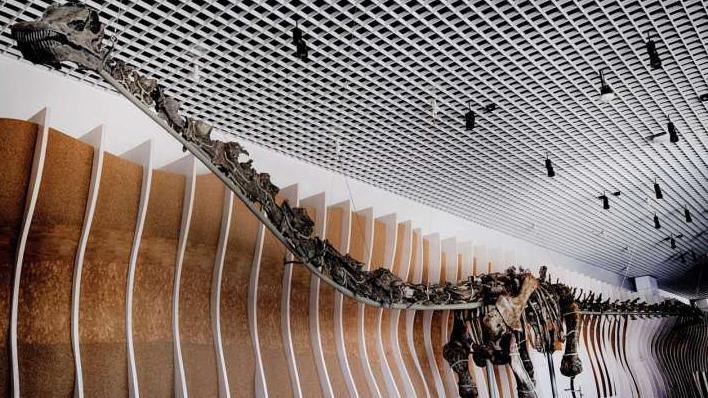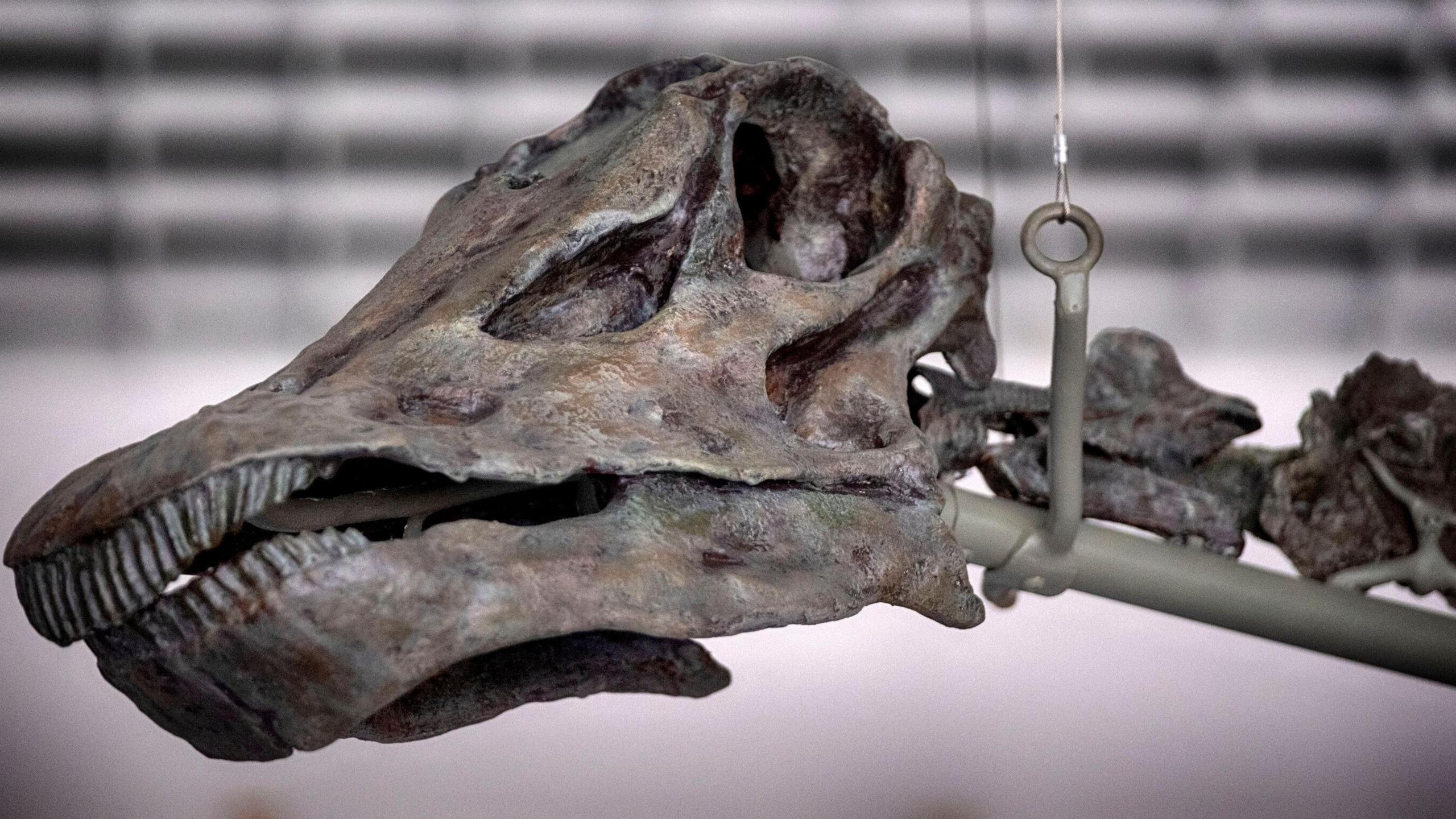Why has this dinosaur got green bones?

- Published
People often wonder what colour dinosaurs were.
Well one dino going on display in a museum in the United States is green.
Although they still don't know what colour the dinosaur was when it was alive, the fossilised bones of the 75-foot-long dinosaur skeleton are an unusual shade of green.
More on dinosaurs
Isle of Wight dino is 'most complete' in more than 100 years
- Published10 July 2024
Fossil shows potential new dinosaur species
- Published22 May 2023
New triceratops ancestor with fancy horns discovered
- Published23 June 2024
According to officials at the Natural History Museum in Los Angeles, as well as being a new species it's the only green-boned dinosaur ever found on Earth.
The long-necked plant-eating dinosaur was named 'Gnatalie' (pronounced Natalie) because of the little flies or 'gnats' which were swarming around when it was dug up.
It is very similar to a sauropod species called Diplodocus.
Sauropods are a family of dinosaurs that were herbivores, meaning they ate plants. They had very long necks, long tails, small heads, and four thick, tree trunk-like legs.
Dinosaurs such as Brontosaurus and Brachiosaurus are also Sauropods.
Gnatalie lived 150 million years ago making it older than Tyrannosaurus rex - which lived between 66 million to 68 million years ago.

The fossilised bones of 'Gnatalie' are a bottled green colour
The blotchy dark green colour of the bones came from a mineral called celadonite during the fossilisation process.
Bones are usually brown and black from silica, commonly found in sand and iron minerals, but green is unusual because caledonite is usually found in volcanic conditions which would normally destroy the bones.
Researchers discovered the bones in 2007 in Utah, in the western United States.
"What better than a green, almost 80-foot-long dinosaur to engage [our visitors] in the process of scientific discovery and make them reflect on the wonders of the world we live in!" Luis M. Chiappe of the museum's Dinosaur Institute said in a statement.
